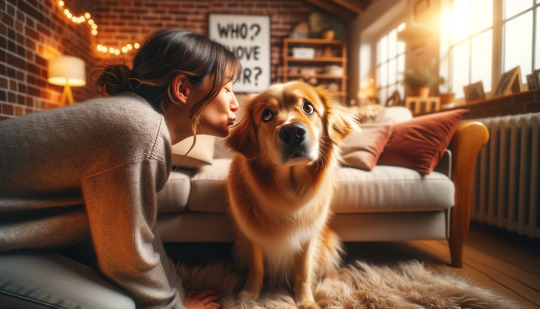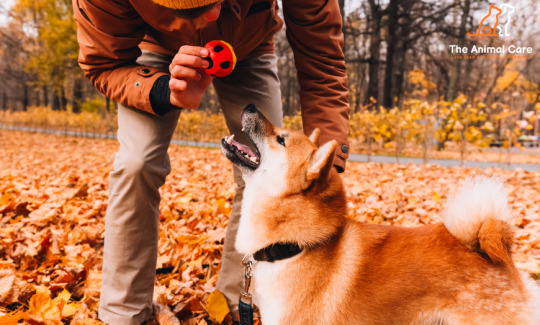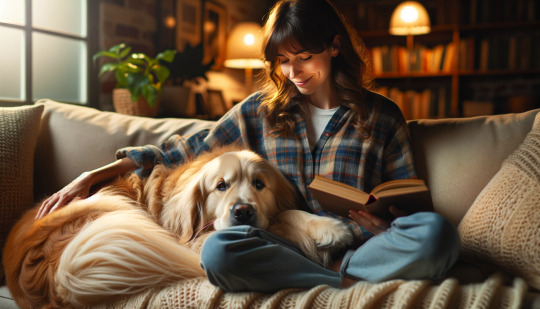#DogBodyLanguage
Explore tagged Tumblr posts
Text
10 Quirky Dog Behaviors and What They Really Mean

Dogs are endlessly fascinating creatures. They’re our loyal companions, cuddle buddies, and sometimes, personal comedians. But let’s face it—our furry friends have a way of doing things that leave us scratching our heads. Why do they tilt their heads like they’re trying to understand us? What’s with the obsession with tail-chasing?
If you’ve ever wondered about the quirks that make dogs so uniquely lovable, you’re in the right place. Here’s a look at 10 puzzling dog behaviors and their fascinating reasons.

1. The Iconic Head Tilt
Few things are cuter than a dog tilting its head when you talk to them. But why do they do it?
What It Means: Dogs tilt their heads to better hear and understand you. Their ear canals adjust to locate the direction of sounds, especially high-pitched tones like a whistle or your voice. Another theory suggests that dogs tilt their heads to improve their field of vision, especially if their muzzle blocks part of what they’re looking at.
Fun Fact: Studies show that dogs who tilt their heads more frequently tend to have higher attention spans, which could indicate they’re focusing extra hard on what you’re saying.

2. Chasing Their Tails
A dog spinning in circles after its own tail is undeniably amusing. But is it normal?
What It Means: Tail-chasing can be a form of play, especially in puppies who are discovering their bodies. For older dogs, it may signal boredom or excess energy. In rare cases, it might indicate a compulsive behavior or underlying issue, such as allergies or anxiety.
Pro Tip: If your dog chases its tail excessively, check for signs of discomfort or consult your vet.

3. The Zoomies
Does your dog ever sprint around the house or yard like a furry tornado? That’s called the zoomies.
What It Means: Zoomies, or “frenetic random activity periods” (FRAPs), are your dog’s way of burning off pent-up energy. They’re often triggered by excitement, such as after a bath or during playtime.
Let Them Zoom: As long as your dog is in a safe environment, let them run it out—it’s a sign of a happy, healthy pup!

4. Leaning on You
When a dog leans their body against you, it can feel like they’re claiming you as their human.
What It Means: Leaning is often a sign of affection and trust. It’s your dog’s way of saying, “I feel safe with you.” In some cases, it might also mean they’re seeking comfort or attention.
Behavior Tip: If the leaning seems excessive, it could indicate separation anxiety or insecurity.

5. Digging in Unusual Places
From your backyard to the couch cushions, dogs love to dig. But why?
What It Means: Digging is instinctual. Wild dogs dig to bury food, create shelters, or find cooler ground. Domestic dogs may dig out of boredom, to hide a toy, or to make a cozy nest.
Solution: Provide designated digging zones or toys to channel this behavior appropriately.

6. Tilting Their Ears Back
Have you noticed your dog flatten their ears when you approach them or when something unusual happens?
What It Means: Flattened ears are a sign of submission or nervousness. If combined with a wagging tail and soft eyes, it’s a friendly, submissive gesture. However, if accompanied by tense body language, it could signal fear or stress.
How to Respond: Observe the context and reassure your dog with a calm, soothing tone.

7. Carrying Random Objects Around
Ever wonder why your dog brings you a shoe, a sock, or even a pillow out of nowhere?
What It Means: This behavior stems from their natural retrieving instincts. Dogs may carry objects to mimic the act of hunting or simply because they find comfort in having something in their mouth. It can also be their way of seeking attention.
What to Do: Redirect them to appropriate toys if they’re prone to grabbing items they shouldn’t have.

8. Tilting Their Nose in the Air
Dogs have an amazing sense of smell, but sometimes their sniffing looks particularly dramatic, like when they lift their nose high into the air.
What It Means: Dogs do this to catch scents carried by the wind. Their olfactory system is highly sensitive, allowing them to detect smells from great distances.
Fun Fact: Dogs can separate different scents even if they’re layered, like picking out a single ingredient from a complex recipe.

9. Sleeping in Weird Positions
From sprawled-out “superman” poses to curled-up balls, dogs have a range of unique sleeping positions.
What It Means: A dog’s sleeping position can reveal their comfort level and mood. For example:
Sprawled on Their Back: They feel safe and trust their surroundings.
Curled Up: A natural instinct to conserve body heat and protect vital organs.
Let Them Be: Their quirky positions are completely normal as long as they’re sleeping soundly.

10. Sniffing Everything (and I Mean Everything)
Dogs don’t just sniff for fun—it’s their primary way of exploring the world.
What It Means: Dogs have up to 300 million scent receptors (compared to our measly 5 million). They use their nose to gather information about people, other animals, and their environment.
Pro Insight: Letting your dog sniff on walks isn’t just good for their nose—it’s great for their mental stimulation, too!
Wrapping Up
Dogs are full of quirks that make them endlessly fascinating. While some of these behaviors might seem odd to us, they’re completely natural and often rooted in instinct, communication, or curiosity.
By understanding these unique traits, we can deepen our bond with our furry friends and appreciate the world from their perspective. So, the next time your dog does something that makes you smile or scratch your head, remember—there’s always a reason behind the quirk!
What’s the quirkiest thing your dog does? Let us know in the comments!
#UnderstandingDogBehavior#WhyDogsDoThat#DogBehaviorExplained#QuirkyDogHabits#DogBodyLanguage#CanineBehaviorTips#FunnyDogBehaviors#DecodingDogActions#WhyDogsChaseTails#DogZoomiesExplained#DogParentTips#PetBehaviorAdvice#dogbehavior
5 notes
·
View notes
Text

Ever wonder what your dog is really trying to tell you? 🤔 Our latest blog post breaks down the secrets of dog body language! Learn to understand their tail wags, ear twitches, and more. Unlock a deeper connection with your furry friend! 🐾 Read more here: Decoding Dog Body Language: Understand Your Furry Friend Better
1 note
·
View note
Text
Dog Body Language | Type of Dog Behavior

Ever wonder what your dog is trying to tell you?
Understanding Doggie Language is key to strengthening your bond with your furry friend! 🐕💬
From playful bows to puppy eyes, Learn to read their signals and become the best pet parent ever! 🐾
📌 Save & Share this guide with fellow dog lovers! 🐕
#DogBodyLanguage#DoggieTalk#petcommunication#UnderstandingDogs#DogBehavior#PetParents#DogTraining#petwellness#DogSignals#PetCareTips#tailwagging#BudgetPetCare
1 note
·
View note
Text
Decoding Dog Behavior: A Guide to Understanding Your Pet’s Body Language
This is one of the most comprehensive resources for dog owners interested in developing a greater understanding of their pet's body language. This guide provides practical insight into the subtle cues that dogs use to express emotions, needs, and intentions. Some exciting areas of discussion include:
1.Tail Wagging: Not always a sign of happiness—learn the different meanings behind various wagging speeds and positions. 2.Ear Positions: Learn how ear positions can indicate the emotional state of your dog, from curiosity to aggression. 3.Body Posture: Learn how the posture of your dog indicates whether they are relaxed, threatened, or submissive. 4.Eye Contact: Learn what your dog's gaze can say, from affection to stress. 5.Vocalizations: Learn what barking, whining, growling, and other sounds can mean. 6.Play Behavior: Learn the differences between friendly play and potential aggression.
By tuning into these behavioral cues, we can learn more about our dog’s emotional state and needs. In the secret life of dogs, they speak a language of wagging tails and soulful eyes.
#DogBehavior#CanineCommunication#DogBodyLanguage#PetBehavior#UnderstandingDogs#DogTraining#DogLovers#PetCare#DogPsychology
0 notes
Text

Ever wondered what your dog's sleeping position says about their health and happiness? Join Dr. Pawsome, our pet care expert, as he breaks down the most common dog sleeping positions and what they indicate. Subscribe to our channel for more pet care tips and advice! Like, share, and comment to let us know your dog's favorite sleeping position!
#DogSleepingPositions#CanineBehavior#dogwellness#PetSleepHabits#UnderstandingDogs#animalcommunication#dogbodylanguage#petcaretips#DogBehaviorInsights#DogSleepSignals#PupPostures#PetSleepScience#FurFriendSleeping#K9Kinks#PawPatterns
0 notes
Text
Why Does My Dog Turn His Head Away When I Kiss Him?

Introduction Getting the answer to, Why Does My Dog Turn His Head Away When I Kiss Him, is a fascinating journey into the world of canine behavior and communication. Dogs express their emotions and preferences in various ways, and their reactions to human displays of affection, like kissing, can vary widely. This post delves into the reasons behind this behavior, exploring aspects of canine body language, past experiences, and sensory sensitivities. We'll uncover the unique ways dogs show affection and how you, as a pet owner, can strengthen your bond with your furry friend by respecting their preferences and comfort levels. Key Takeaways: Why Does My Dog Turn His Head Away When I Kiss Him? - Dogs show affection differently and may turn their head away when kissed due to discomfort or sensory sensitivity. - Understanding canine body language, like tail wagging and facial expressions, is essential for interpreting their emotions and reactions. - Each dog's past experiences can significantly influence their response to physical affection such as kisses. - Observing a dog's behavior and respecting its boundaries is crucial for building trust and a strong bond. - Alternative forms of showing affection, like petting or interactive play, can be more comfortable for some dogs. - Professional guidance can be beneficial for addressing behavioral concerns and improving understanding of your dog's needs. - Regular, positive interactions and respecting your dog's preferences are key to a happy and healthy pet relationship. - Every dog is unique; adapting your approach to their individual preferences enhances mutual comfort and enjoyment.
Signs of affection in dogs
Read the full article
#animalbehavior#caninecommunication#caninepreferences#dogaffection#dogbehavior#dogbodylanguage#DogEmotions#Dogtraining#dogturnhisheadawaywhenIkisshim#dog-humaninteraction#petbonding#petcare#petcomfort#petpsychology#understandingdogs
0 notes
Text
Decoding the Language of Pets: Understanding Pet Body Language
Communication is essential in any relationship, and understanding your pet's body language is key to building a strong and harmonious bond. Our furry companions communicate with us through a complex system of signals, expressions, and body postures. In this article, we will delve into the fascinating world of pet body language, exploring common cues displayed by dogs and cats. By decoding their language, you can better understand your pet's needs, emotions, and overall well-being.
Tail Language
A pet's tail is an expressive tool that provides valuable insights into their mood and intentions. Learn to interpret the different tail positions and movements in dogs and cats, including wagging, tucked, raised, and bristling tails, to gauge their emotional state and level of comfort. Understanding tail language allows you to gauge if your pet is happy, scared, or agitated.
Facial Expressions
Just like humans, pets display a range of facial expressions that convey their emotions. Discover the subtle cues in their eyes, ears, and mouths to understand whether they are happy, relaxed, fearful, or agitated. Look for signs of relaxed eyes, forward or flattened ears, and open mouths to assess their current emotional state.
Body Posture
The way pets carry themselves and position their bodies provides significant information about their intentions and feelings. Observe the overall posture, stance, and body weight distribution to determine if they are relaxed, alert, or defensive. Pay attention to cues such as raised hackles, crouching, or leaning forward to interpret their level of confidence or fear.

Vocalizations
While body language is the primary form of communication, vocalizations also play a role in expressing emotions. Explore the different types of barks, meows, purrs, and growls to decode your pet's vocal cues. Understand the variations in pitch, tone, and duration to differentiate between fear, playfulness, distress, or contentment. Barks, meows, purrs, and growls are part of a pet's vocal repertoire. Each vocalization carries a unique meaning. Learn to differentiate between different types of barks or meows and understand their context.
Pupil Dilation
Pupil dilation is an important indicator of your pet's emotional state. Learn how changes in pupil size can indicate excitement, fear, or aggression. By observing their eyes, you can better understand their comfort level in various situations. A pet's eyes and ears can speak volumes. Learn to interpret the shape of their eyes, the size of their pupils, and the position of their ears to decipher their mood. Wide eyes, dilated pupils, or flattened ears may indicate fear or anxiety, while relaxed eyes and forward ears suggest a calm and contented pet.
Contextual Interpretation
To accurately interpret your pet's body language, consider the context and the overall environment. Understanding the specific triggers, past experiences, and individual personality traits will provide valuable context to interpret their behavior correctly.
Tailoring Training and Socialization
By understanding your pet's body language, you can tailor training and socialization efforts to meet their specific needs. Recognizing signs of stress or discomfort allows you to modify training methods and create positive and safe social interactions.
Conclusion
Understanding your pet's body language is a powerful tool for effective communication and building a deep connection. By observing tail language, facial expressions, body posture, vocalizations, pupil dilation, and considering the context, you can decode their emotions and needs. This understanding enables you to respond appropriately, ensuring their comfort, safety, and overall well-being. Remember, each pet is unique, so spend time observing and learning their individual cues. With patience, practice, and a keen eye, you will become fluent in the language of your beloved companion, fostering a stronger and more meaningful bond. With time and practice, you'll become fluent in the language of your beloved companion, creating a stronger and more meaningful connection that will enrich both of your lives.
0 notes
Text
Why My Dog is not Playing!!??

Dogs, our loyal companions, communicate in mysterious ways. Understanding their behavior is vital for harmonious pet parenting. Let's explore their language, psychology, and instincts to strengthen our bond with these beloved furry friends.
Canine Communication:
Dogs speak through body language - postures, tail wags, and expressions. Learning their cues fosters better interactions and mutual understanding.
Dog Psychology:
Emotional creatures, dogs feel joy, fear, and empathy. Delving into their psychology nurtures a stronger connection and emotional support.
The Role of Canine Instincts:
Rooted in wolf ancestry, dogs have primal instincts. Knowing these instincts aids in understanding their behavior and creating a secure environment.
Pet Parenting and Training:
Positive reinforcement training molds well-behaved dogs. Consistency and patience in pet parenting build a happy canine companion.
Common Behavioral Issues and Solutions:
Addressing problems like barking and anxiety requires identifying the cause. Effective solutions lead to positive behavioral changes.
Conclusion:
Unlock the secrets of your furry companion! By grasping their language, emotions, and instincts, you'll forge an unbreakable bond with your dog, creating a fulfilling and joyful partnership.
Source: The Animal Care Online Course.
#DogBehavior#AnimalBehavior#DogBehaviorIssues#BehavioralTraining#PetCare#DogTraining#PetParenting#CanineInstincts#DogPsychology#UnderstandingDogs#DogEmotions#DogBodyLanguage#CanineCommunication
0 notes
Text
Discover why your dog winks and how to interpret it! Learn about the different types of dog winks, their meanings, and how to strengthen your bond with your furry friend. #dogbehavior #dogsofinstagram #whydoesmydogwink #dogbodylanguage #petcaretips #doglover #animalcommunication #dogsmile #puppylove #dogfacts #learnaboutdogs #cutedogs #dogblogger #ilovemydog
3 notes
·
View notes
Text
Understanding Your Dog’s Body Language: A Comprehensive Guide
https://supedium.com/pets/understanding-your-dogs-body-language-a-comprehensive-guide/ #caninebehavior #caninebodysignals #dogbodylanguage #dogcommunication #dogtraining #understandingdogs Understanding Your Dog’s Body Language: A Comprehensive Guide https://supedium.com/pets/understanding-your-dogs-body-language-a-comprehensive-guide/
0 notes
Text
🔊 Get Simple Dog Training Here
#waggingtails #dogbodylanguage #dogbehavior #dogtips #dogtraining
0 notes
Link
🐕 Dog's Eyes – TOP 7 Signs Your Dog Sends You With Their Eyes! https://youtube.com/watch?v=XiVZZs__-3o
#dogsEyes#Eyes#dogBodyLanguage#DogTalking#DogSigns#CalmDog#TOP10#Dogs#Dog#Pet#Pets#HealthyPetSystems#HealthyPets#YouTube#trendy#dogbreeds#HappyDog#animal#doglover#dogslife#lovedogs
2 notes
·
View notes
Text
Decoding Dog's Body Language

Confused by your canine companion?
Let's translate their body language! Swipe to see common signals on What's your furry friend really saying? & shop BudgetPetCare for happy pup essentials!
#DogsofInstagram#budgetpetcare#DogBodyLanguage#DecodingDogs#PetCommunication#agressivedog#happydog#relaxeddogs
0 notes
Text
What's Your Dog Trying to Tell You? A Beginner's Guide to Reading Dog Behavior
🌟 https://www.pawssnouts.site/2022/12/whats-your-dog-trying-to-tell-you.html
0 notes
Video
youtube
Signs of stress in dogs: understanding them
#dogbodylanguage#dogcommunication#dogcalmingsignals#dogstresssignals#dogstress#stresseddogs#stressindogs#signsofstressindogs#anxietyindogs#caninebodylanguage#k9bodylanguage#k9communication#caninecommunication#understandingyourdog#talkdog
0 notes
Text
What Does It Mean When A Dog Curls Up Next To You?

Introduction
Key Takeaways: What Does It Mean When A Dog Curls Up Next To You? - Dog cuddling is a deep expression of trust and affection. - Curling up next to you indicates your dog's need for safety and comfort. - Different cuddling positions reveal various emotional connections. - Cuddling positively impacts a dog's mental and emotional health. - Creating a comfortable environment encourages positive cuddling behavior. - Recognizing when cuddling might indicate a problem is essential. - Understanding and responding to your dog's cuddling needs strengthens your bond. - Cuddling has mutual benefits for both dogs and humans, enhancing well-being. Understanding Your Dog's Body Language Read the full article
#animalbehavior#AnimalPsychology#CanineCompanionship#caninetrust#dogaffection#dogbehavior#dogbodylanguage#dogcuddling#dog-humanbond#emotionalconnectionwithpets#petbonding#petcare#petcommunication#pettrust#understandingdogs
0 notes